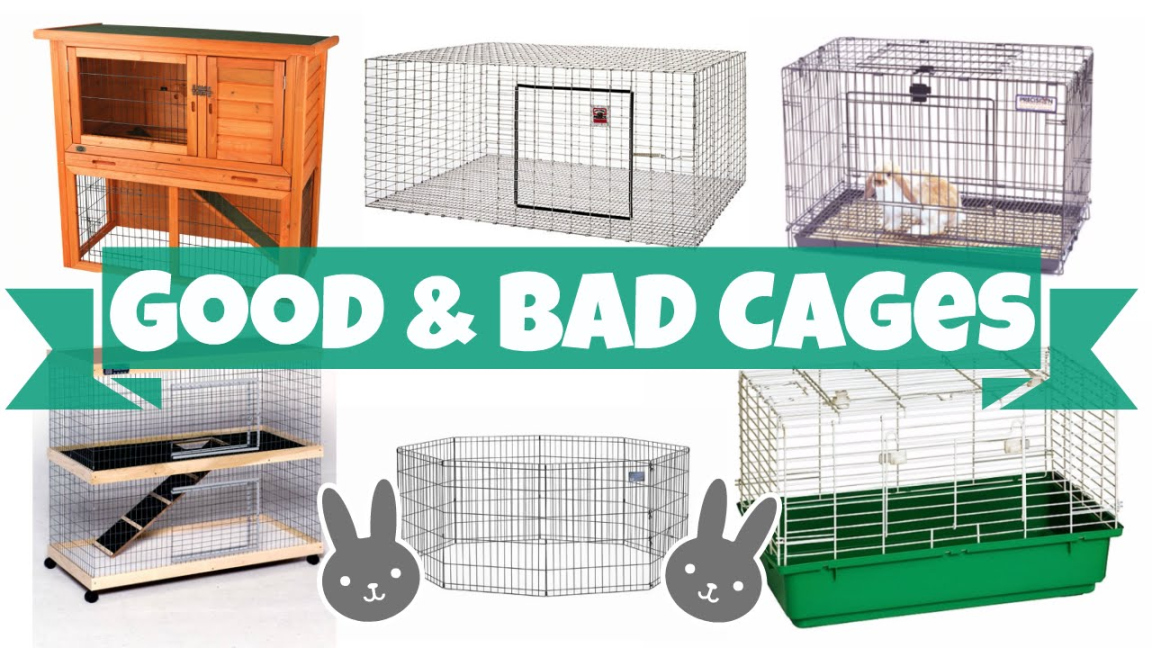How Big Should a Rabbit’s Cage Be?
Rabbits are adorable and social creatures that make great pets. To keep them happy and healthy, it is important to provide them with a cage that offers enough space for their activities. But how big should a rabbit’s cage be? Let’s explore the factors to consider when determining the ideal size for your furry friend’s enclosure.

The Importance of Cage Size
A rabbit’s cage is its home, and just like humans, rabbits need adequate space to move around, exercise, and exhibit their natural behaviors. A cage that is too small can lead to a variety of issues, such as obesity, muscle wasting, and behavioral problems. Therefore, providing a spacious cage is essential for a rabbit’s overall well-being.
Factors to Consider
When determining the size of your rabbit’s cage, there are several factors to consider:
- Breed: The size of your rabbit’s breed plays a significant role in determining the cage size. Larger breeds, such as Flemish Giants, require more space compared to smaller breeds like Netherland Dwarfs.
- Activity Level: Some rabbits are more energetic and enjoy hopping and playing around more than others. If your rabbit is particularly active, a larger cage will provide the necessary room for exercise.
- Time Spent Outside the Cage: If your rabbit has plenty of opportunities to roam outside the cage, such as in a rabbit-proofed room or a secure outdoor enclosure, you can opt for a slightly smaller cage size.
- Number of Rabbits: If you have multiple rabbits, the cage should be large enough to accommodate all of them comfortably. Each rabbit should have enough space to rest, eat, stretch, and play without feeling cramped.
Recommended Cage Sizes
While the cage size can vary depending on the factors mentioned above, there are general guidelines to help you determine the minimum recommended size for your rabbit’s cage:
- Small Breeds: For small breeds, such as Netherland Dwarfs or Mini Lops, the cage should have a minimum size of 24 inches by 36 inches (61 cm by 91 cm).
- Medium Breeds: Medium-sized rabbits, like Dutch or Rex breeds, require a cage with a minimum size of 30 inches by 36 inches (76 cm by 91 cm).
- Large Breeds: Larger breeds, such as Flemish Giants or English Lops, need a cage with a minimum size of 36 inches by 48 inches (91 cm by 122 cm).
To enhance your rabbit’s living environment, providing additional vertical space is also important. Consider choosing a cage with multiple levels or adding ramps and platforms to allow your rabbit to explore and jump. Remember, the more space, the happier your rabbit will be!
A cage that is too small can lead to a variety of issues, such as obesity, muscle wasting, and behavioral problems.
Frequently Asked Questions (FAQs)
1. How much time should my rabbit spend outside the cage?
Although the cage should offer enough space for your rabbit’s activities, it is crucial to allow them supervised time outside the cage daily, preferably several hours. This time outside the cage allows for exercise, mental stimulation, and social interaction with you and other household members.
2. Can I let my rabbit roam freely in my house?
Rabbits can be allowed to roam freely in a rabbit-proofed area of your house. However, it is essential to ensure the surroundings are safe, free from hazardous objects, toxic plants, and dangerous electrical cords. Supervision is also necessary to prevent your rabbit from chewing on furniture or other items.
3. Should I get a cage with a wire or solid bottom?
It is recommended to choose a cage with a solid bottom instead of a wire one. Wire bottoms can cause discomfort and potentially lead to sore hocks, a condition where the rabbit’s hocks become irritated or inflamed due to constant pressure on the wire. A solid bottom provides a more comfortable surface for your rabbit’s sensitive feet.
4. Can I use a dog crate as a rabbit cage?
While dog crates may seem like a convenient option, they are generally not suitable as rabbit cages. Dog crates are usually designed with larger spaces between the bars, which can pose a risk of injury or escape for rabbits. Additionally, dog crates often lack adequate space for rabbits to move around comfortably, making them an unsuitable long-term housing option.
Providing a properly sized cage is crucial for the well-being of your rabbit. By considering the breed, activity level, time spent outside the cage, and the number of rabbits, you can ensure your furry friend has enough space to thrive. Remember, a happy and healthy rabbit is a joy to have as a pet!
Related Articles…
Copyright Notice:
All images on this website are obtained from the internet and remain copyrighted to their original owners. If you hold copyright to any image and want it taken down, please reach us.